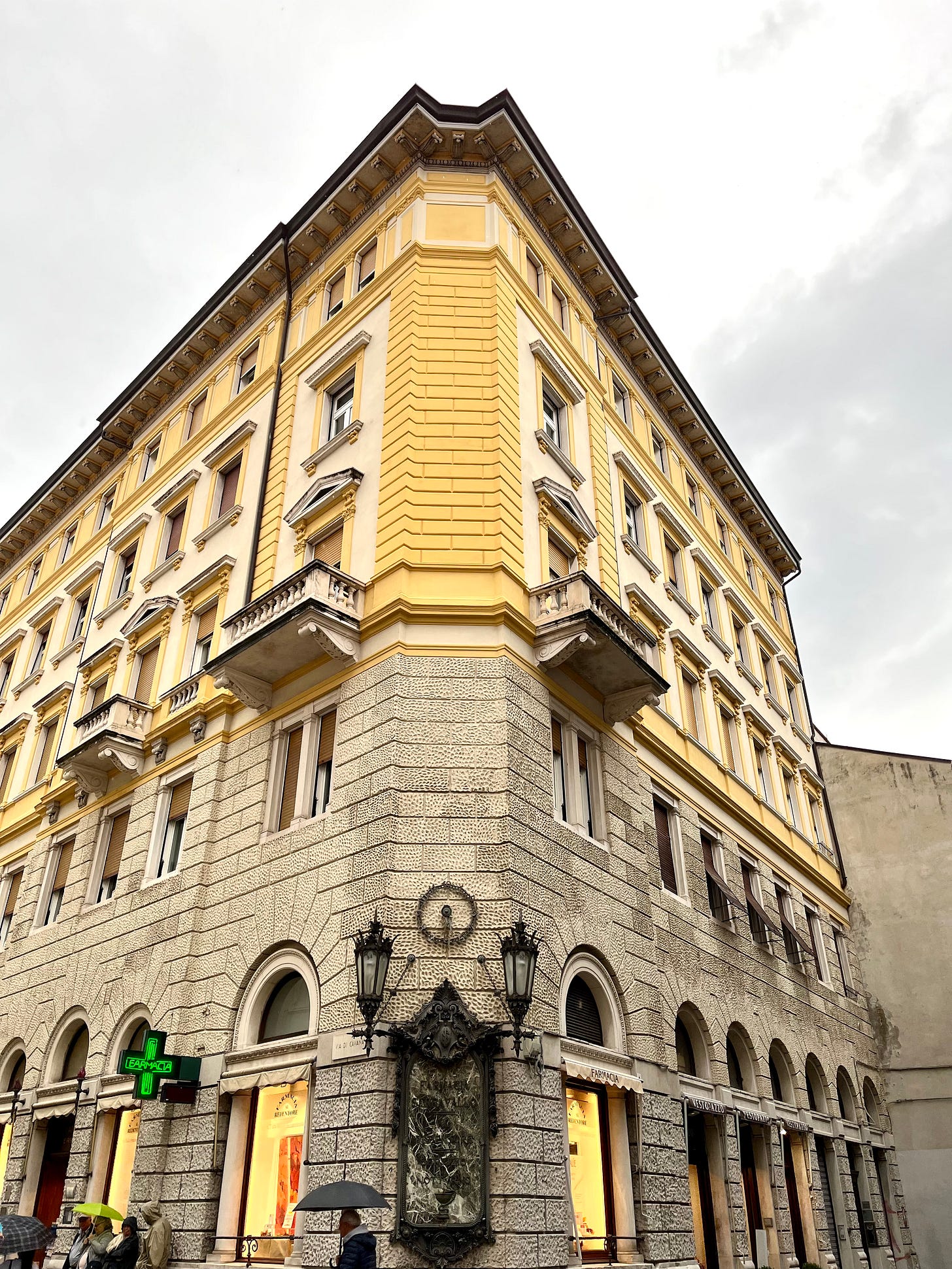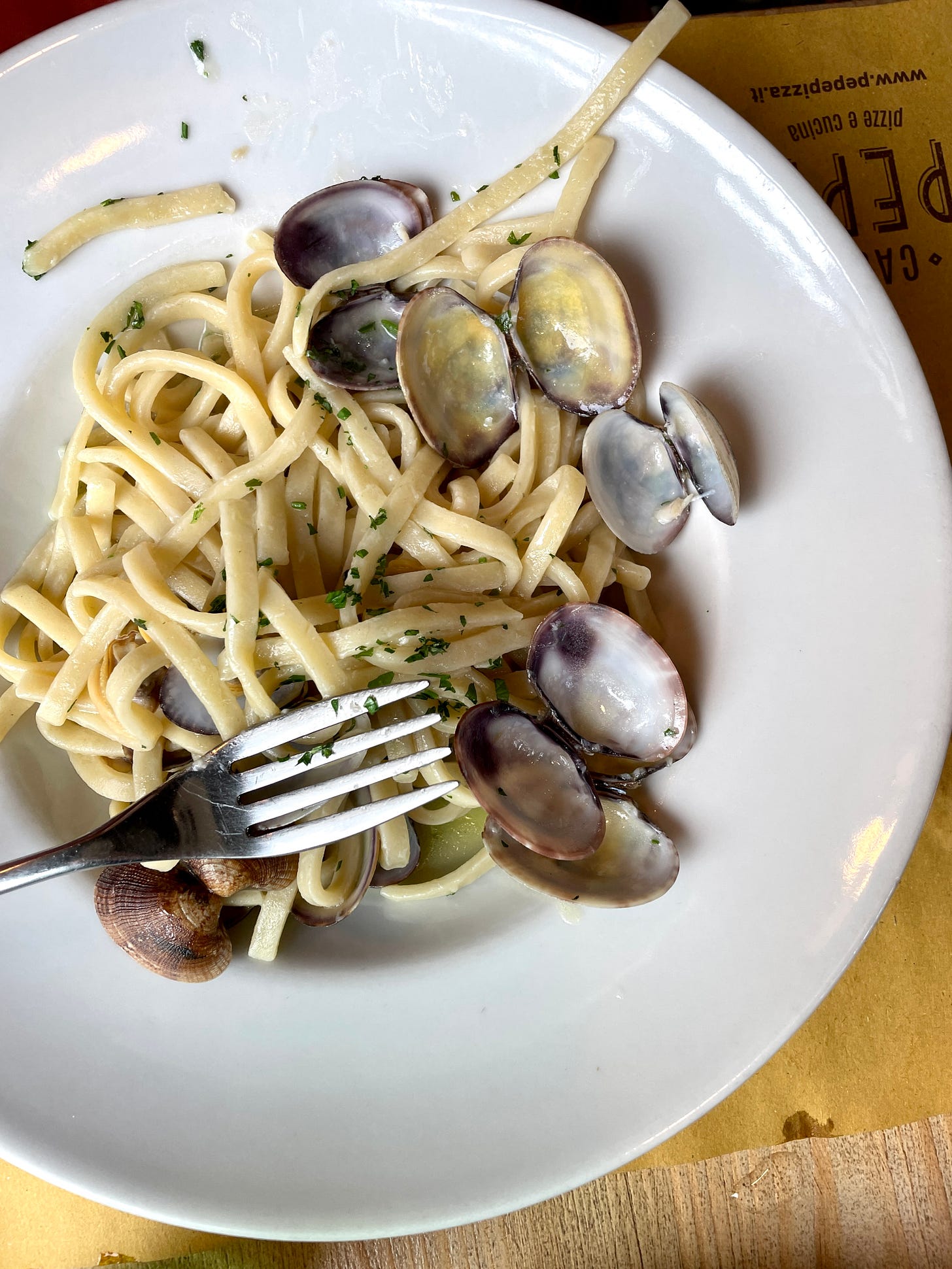24 HOURS IN TRIESTE
A walking tour of this Italian port-city's best cafes, patisseries, and specialty shops (+ pizza!)
This is the first in a two-part travel series —a detour from recipes to bring you the best of what I see when I’m out in the world. Because travel reporting is extremely time intensive, I’m offering the full posts to paid subscribers. A portion of this post is free, but if you want every last detail—a paid subscription gets you in.

Hello!
We’re just back from a trip to Italy, and Slovenia–a jam-packed whirlwind trip to the Adriatic soaked with so much history, beauty, and delicious food it feels as if I will burst if I don’t share it with you. So, here we are–my first postcard from Italy.
One of the perks of living in Hungary is that if you open a map, you quickly find there are six or seven countries you can drive to within 5 or 6 hours in any given direction: Italy, Austria, Croatia, Slovenia, Germany, and Slovakia—to name a few.
I have long held a fascination with Trieste—a former jewel of the Austro-Hungarian empire—once considered one of the most prosperous Mediterranean seaports and the capital of literature and music, until it was lost to Italy in 1918. I knew there would be all the Italian vibes I love (let’s face it: the Italian vibes we all love), plus lots of Hungarian history that feels like an essential piece of me knowing the full story. So, back in late August, well-fed on country life and fueled by photos from my favorite travelers (Yolo, Mimi Thorrison, and CNT), I booked a trip to Trieste, to coincide with Andras’s return to Hungary, this fall.
Can you blame me? Trieste, Friuli-Venezia Giulia, Italy is the full calling card for this city. With a name like that, who could resist?
Trieste is in a small nook of land that could easily be part of Slovenia, or Croatia—both of which once belonged to Austro-Hungary. It’s a crossover region with a curious mix of culinary and architectural influences, that remains wonderfully culturally and ethnically diverse.
Conde Nast Traveler describes it like this: sea vistas, Habsburg squares, and cafés. I would call it: beautiful, dense, and lived in—a practical city that boasts a bustling port, sprawling squares, and hundreds of perfect coffee shops (Trieste is home to the company illy, and often called Italy’s coffee capital; a little history, here).
Trieste is confident, and uncompromising—like the shiny loafers and blazers of its local inhabitants.
Though not as romantic as Florence or Venice, not as breathtaking as Rome or Amalfi—Trieste is still exactly what I love about Italy. At every turn, it says, “we serve wine and coffee and olives here; If you don’t like it, move along.” Trieste is confident, and uncompromising—like the shiny loafers and blazers of its local inhabitants.
While the architecture, art, and cafes were all wonderful, what I absolutely loved here were the exceptionally tailored food shops: specialty shops, cheese markets, fishmongers, coffee and chocolate shops, and confectioners. Having traveled in Vienna and Paris and Portugal, and lived in a place with excellent market goods (NYC, and the Hudson Valley), I usually feel food shopped out when I travel. But in Trieste, the shops were the best of all worlds: Rome, Vienna, and Budapest, all rolled into one.
So, Instead of telling you about all the landmarks and museums (you can find that in any travel guide), below, I’m sharing the large, meandering loop we did around Trieste and the names of the best shops and cafes we chanced upon along the way (*see practicalities, below).
This affords you views of all the Hapsburg squares, statues, harbor, sailboats, and architecture, with a full belly and a happy heart. Buon Appetito!
xx
Sarah
This is a reader-supported publication— made possible because of the generosity of paid subscribers. Become a paid subscriber, HERE. Other ways you can support my work? Like, comment, and forward this email to a friend. xx.
HOW TO EAT TRIESTE, IN ONE DAY:






